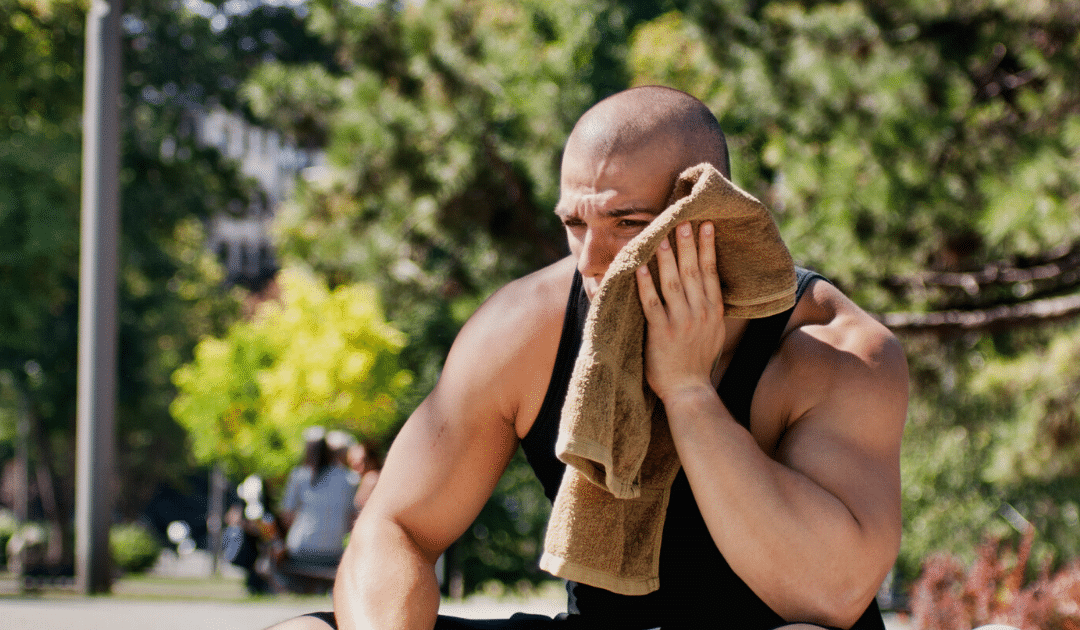Firefighting is a hot job no matter when you do it. But during the summer months, with all that extra heat and humidity, it can be brutal. How do you keep your cool — and cool down? Read on.
A blazing fire can be 2000 degrees Fahrenheit. In your heavy gear, the perspiration builds up and your core temperature can be as high as 160 degrees. After 20 minutes, you’re exhausted. Couple that with a hot summer’s day and it seems like there’s no relief in sight.
Here are some “do’s and don’ts” to help you cool down and stay safe on a hot summer’s day on and off duty.
Do: Stay hydrated.
Water is your drink of choice. (Or try coconut water which contains potassium, a great source of electrolytes.) Drink water whether you are thirsty or not. And drink it three days leading up to your shift—because it will help keep you hydrated. When you’re fighting an active fire, your body will evaporate 1 liter of sweat for each hour of work. Make sure to replace that loss by drinking electrolyte beverages as soon as you are able.
Don’t: Drink caffeinated beverages, sugared drinks, or alcohol.
Caffeine constricts blood vessels which makes you warm. Coffee, tea and caffeinated beverages are a diuretic, which means they cause you to urinate. Sugary drinks actually make you thirsty and can provide a crash in energy. Alcohol causes dehydration. Drink it the night before your shift and you will feel the effects the next day.
Do: Eat for the heat.
That means light healthy meals so your body doesn’t have to work as hard to process them. Include foods that help replenish electrolytes that are lost through sweating. These include watermelon, peaches, apricots, and radishes. Leafy greens also contain a large percentage of water, which helps keep you hydrated.
Don’t: Eat a heavy meal.
It takes a lot of energy for our bodies to digest a steak dinner. When our body breaks down protein, it creates heat. You don’t have to eliminate meat altogether; just take it easy and substitute more carbs.
Do: Stay physically fit.
When you’re in shape, you have a lower heart rate and body temperature. This allows you to adjust to heat stress twice as fast as your fellow Americans who are unfit.
Don’t: Push your physical limits.
It takes time to acclimate to working in the heat. Start gradually and increase over time. It takes about 10-14 days to get used to it. Listen to your body. It will tell you when you’re ready for a break.
Don’t: Run the air conditioner on the way to the fire.
The temperature change from cool to very, very hot can affect your body. Instead, keep the windows open and the air blowing but the air conditioning off on the way to a call.
Do: Use ice, water, and cooling technology.
Set up a bucket filled with ice water so that you can immerse your hands and forearms. Put a damp towel in the freezer and wrap it around the back of your neck when you need relief. Apply cold pressure to other pulse points: your wrist, chest, temples. Spritz yourself with a garden hose; dribble water down the back of your neck from your water bottle. Try a cold pack vest if it fits under your gear. But stay away from misting fans in a humid environment. They’re good for dry environments, but in high humidity, these fans can increase the chance of burns.
Don’t: Ignore the symptoms of heatstroke.
More than 700 people die each year from the heat. If you are feeling warm, light-headed or experiencing muscle cramps, get out of your jacket to let the heat escape. Apply icepacks to your forearms.
If you experience any of the symptoms of heatstroke, seek help immediately:
-
- Body temperature above 103 Fahrenheit
- Dizziness
- Nausea
- Headache
- Red, hot and dry skin
- Rapid heartbeat
- Confusion
For more information on First Responder heat stress prevention, click here.
This article is furnished by California Casualty, providing auto and home insurance to educators, law enforcement officers, firefighters, and nurses. Get a quote at 1.866.704.8614 or www.calcas.com.
- Graduation – When to Remove Your Child from Your Auto Policy - May 18, 2023
- How to Prevent Catalytic Converter Theft - May 17, 2023
- How Much Does Home Insurance Cost? - May 17, 2023

